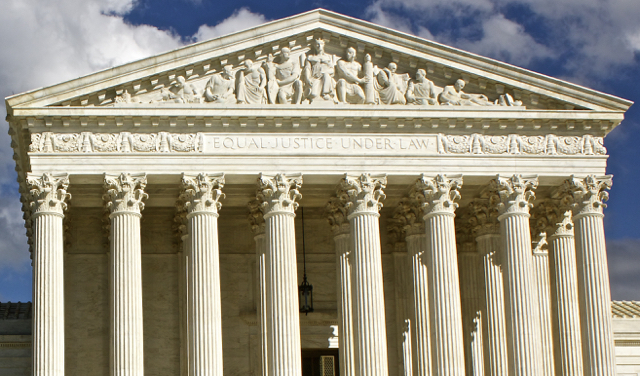The Dobbs late abortion case heard by the Supreme Court this week is the most consequential case for the pro-life movement in two generations. In this case involving Mississippi’s law to limit abortions after 15 weeks, the Court agreed to consider whether any pre-viability limits on abortion are constitutional – a question with implications for millions of lives, born and unborn, and for American democracy.
The justices will meet Friday in a private conference to take an initial vote, then write their opinions and issue a decision likely next June. Their positions could still change. With the usual caveats about making predictions, there is reason to be optimistic about how arguments went.
On the pro-abortion side, Justice Sotomayor characterized the notion that unborn children experience pain well before viability as “fringe science.” But one of the leading proponents of that view – Dr. Stuart Derbyshire – is a mainstream enough authority that the abortion lobby cited his earlier work in their reply brief back in September. They just failed to mention that he has publicly changed his position, writing in a prestigious journal last year: “the evidence … points toward an immediate and unreflective pain experience mediated by the developing function of the nervous system from as early as 12 weeks.” Principled scientists follow the facts. Policymakers should be allowed to, too.
Chief Justice Roberts noted that the United States has more in common with China and North Korea than most of Europe when it comes to abortion policy. Roberts is right. A comprehensive 2014 analysis of international abortion laws showed that the United States is one of a tiny handful of nations that allow abortion on demand more than halfway through pregnancy, even up to birth. This information was fact-checked by The Washington Post and received the coveted “Gepetto Checkmark” for accuracy.
SUPPORT LIFENEWS! If you like this pro-life article, please help LifeNews.com with a donation!
Additional analysis finds that 47 out of 50 European nations limit elective abortion to prior to 15 weeks. Eight European nations, including Finland and the United Kingdom, do not allow elective abortion and instead require a specific socioeconomic or medical reason. No European country allows abortion on demand throughout pregnancy as we do under Roe. Mississippi’s 15-week limit, if upheld, would be a significant step in the right direction.
Justice Kagan repeated the pro-abortion claim that “not much has changed since Roe and Casey.” This is, at most, partially true. Unborn babies haven’t changed – but medicine and technology have advanced dramatically over the last 50 years, greatly enhancing our understanding of these small but astonishingly complex human beings. Dr. Tara Sander Lee of the Charlotte Lozier Institute explains:
“Back in 1973, ultrasound technology displayed a baby using grainy, black and white dots. It was difficult to identify major body parts, much less fetal behavior. Now, 4D ultrasound enables us to see the baby cry after receiving an injection, smile, yawn, hiccup, suck their thumb, and even determine if the baby will be right-handed or left-handed.”
Modern science makes clear that an unborn baby’s heart begins beating about 22 days after fertilization; by 15 weeks, that heart has already beat almost 16 million times, the baby has fully formed arms and legs, and her body responds to touch and pain. Logically, doctors administer the baby anesthesia during fetal surgery.
This was the most substantive debate on abortion the Court has ever had (and it’s a shame President Biden wasn’t paying attention.) Another central question was who gets to decide: unelected judges, or the people through their elected representatives? After decades of being denied the right to protect women and children as they deem best, all Americans deserve to have a debate in their state, their legislatures, in our Congress, and to have their will reflected in our laws.
Mississippi Attorney General Lynn Fitch said it well: “It will be messy and it will be hard, and may play out differently from state to state. But that is the role the Constitution gave to the people, and the court needs to return to us now.”
In some places, abortion will remain legal if Roe falls, at least in the near term. This shouldn’t discourage us. Americans overwhelmingly support far greater limits on abortion than are currently permitted under the Roe regime; states enacted more than 100 new pro-life laws this year alone. Pro-life activism over the years has brought the abortion rate to its lowest point since Roe. America’s 2,700 pregnancy centers vastly outnumber abortion centers and serve millions of our neighbors each year.
Life is winning, and that should embolden us to redouble our efforts to address the root causes of abortion while we pursue the most ambitious legislative protections yet.
LifeNews Note: Marjorie Dannenfelser is president of the national pro-life group Susan B. Anthony List.








